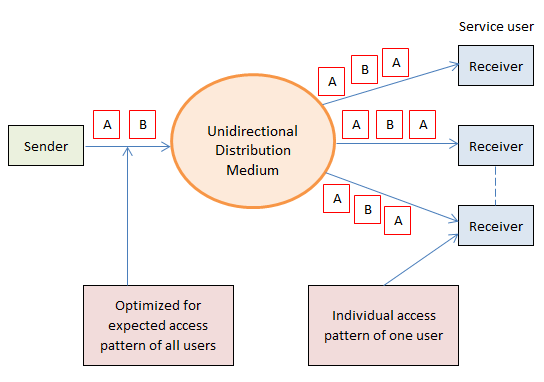Broadcast Systems
Broadcast systems are also known as unidirectional or a
symmetrical distribution system. Here a high bandwidth data stream is sent from
one sender to many receivers. The problem with this type of communication
system is, the sender cannot organize the data transmitted for a single user.
Hence, the sender tries to optimize the data for all receivers.
Each receiver
now picks up only the packets needed and drops the others. Consider the
following diagram to illustrate broadcast communication.

Cyclical Data
A sender cannot know from when the receivers start receiving and hence in order to give receivers a chance to receive the information, the data that is transmitted must be re-transmitted such repeated data blocks that are broadcasted cyclically (in a cyclical manner) are called broadcast disks.
The data blocks can be re-transmitted using one of the 3 patterns. Accordingly, the broadcast disk is classified into 3 categories viz:
1. Flat Disk
2. Skewed Disk and
3. Multi Disk
1. In case of Flat Disk, all blocks are repeated one after another. Each block is transmitted for an equal amount of time.
2. In case of Skewed Disk, few blocks are sent maximum number of times that the other blocks.
3. In case of Multi Disk, the blocks that have to be repeated more number of times are distributed evenly.
Consider the following broadcast patters:

A data block that is getting transmitted can be cached on the receiver for faster reference.
Average Acceleration Calculator
Average acceleration is the object's change in speed for a specific given time period. ...
When an object falls into the ground due to planet's own gravitational force is known a...
In Mathematics, the permutation can be explained as the arrangement of objects in a particular order. It is an ordered...
A rectangle can be explained as a 4-sided quadrilateral which contains equal opposite sides. In a rectangle
A three sided polygon which has three vertices and three angles is called a triangle. Equilateral triangle...






